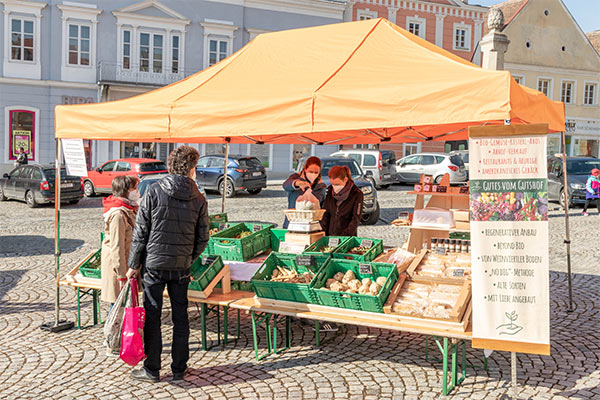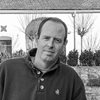Subtotal: $
Checkout-

My Forest Education
-

Regenerative Agriculture
-

Into the Sussex Weald
-

The Abyss of Beauty
-

Let the Body Testify
-

Ernest Becker and Our Fear of Death
-

Singing God’s Glory with Keith Green
-

More Fish Than Sauce
-

Return to Idaho
-

The Glory of the Creatures
-

Poem: “The Path”
-

Poem: “The Berkshires”
-

The Secret Life of Birds
-

Why Children Need Nature
-

Made in the Image of God
-

The Lords of Nature
-

Editors’ Picks: The Opening of the American Mind
-

Editors’ Picks: Klara and the Sun
-

Writing in the Sand
-

City of Bees
-

Sister Dorothy Stang
-

Midwestern Logistical Small Talk
-

Covering the Cover: Creatures
-

Love in the Marketplace
-

The Elemental Strangeness of Foxes
-

Saints and Beasts
-

Astronomy According to Dante
-

The Book of the Creatures
-

Letters from Readers
-

Vulnerable Mission in Action

Community-Supported Agriculture in Austria’s Weinland
By Andrew Zimmerman
July 30, 2021
Available languages: Français
I was never much of a gardener. Sure, I put a few cherry tomatoes in a small plot each summer, along with some basil and parsley. But I had never heard of the five principles of regenerative agriculture, and I was certainly not aware that broccoli, kohlrabi, and kale are essentially the same plant, Brassica oleracea, that has been selectively bred over centuries.
After moving to Austria two years ago to help found a new Bruderhof community, that changed. To earn our living, we wanted to find a business that fit in with the local economy. Agriculture was one thing that made sense; the local landscape was dominated by vineyards, fields of sunflowers, and pumpkin patches, and the property we moved into had a seven-acre field attached.
But we didn’t want to go into industrial farming. One of our community members had studied organic agriculture in Germany, and was convinced of the dangers of pesticides and herbicides. Plus, in a dry climate – we receive only around fifteen inches of rainfall annually – water was going to be crucial.
So we turned to regenerative agriculture, and started an intensive market garden on one of the acres. The core principles of this type of farming call for minimal soil disturbance, maximum crop diversity, keeping the soil covered with vegetation, integrating livestock, and leaving old rootstocks in the ground.

Selling garden produce in the nearby town of Retz. Image courtesy of Andrew Zimmerman
Planting many different kinds of crops isn’t too hard, and actually helps our business model, since we sell weekly vegetable box subscriptions and participate in local farmers’ markets. Integrating livestock? We spent the winter building a mobile stall for our new free-range laying hens.
Some of the other principles are more work: keeping the soil covered reduces wind erosion and water evaporation, but to achieve that, you can’t sow seed directly. So we start plants in our greenhouse and then have weekly transplanting projects of several thousand “plugs.” While the work is almost literally backbreaking (at least for me, a tall guy in his mid-forties) it involves our entire twenty-odd community members, and connects me with the earth in a way that my other work (posting behind-the-scenes videos on Facebook or dealing with customers who want to skip a box when they go on vacation) doesn’t.
Minimizing soil disturbance means that after harvesting a bed, we don’t plow it, which would expose and reinvigorate dormant weed seeds. Instead, we loosen the soil with a broadfork and leave the roots there to decompose. This keeps organic matter in the ground where it belongs, and drastically reduces weed problems.
We’ve had a great response. The box subscription program is taking off – the pandemic may have helped us, as many customers want home delivery – and we’ve doubled the number of beds under cultivation for Year Two.
But to me it’s bigger than just agricultural principles and a successful startup. It is care of the creation – soil, plants, worms, even microbes – that God has given us, as in Genesis 1:29. Not to sound grandiose, but what we’re doing is saving the planet – at least our little corner of it.
I’m still not much of a gardener, but I get my hands dirty a couple times a week. Bruderhof founder Eberhard Arnold wrote that “a person’s intellectual life needs to be stimulated and deepened, if he is to become human. But only when he knows the pleasures of physical labor will he experience the joy of being – joy in God and joy in his creation.” I couldn’t agree more. Sure, I’m no match for my teenage sons, who can broadfork a twenty-yard bed in about three minutes, but I know my brassicas now.
Already a subscriber? Sign in
Try 3 months of unlimited access. Start your FREE TRIAL today. Cancel anytime.








































